Dhaka. Part One. The City
Once upon a time, Bangladesh was a part of colonial India. In 1947, the British Empire disintegrated, and the territory of Bengal split in half along religious lines. The western part, including Hindus and Kolkata, joined India, while the eastern part, with Dhaka and Muslims, initially became a part of Pakistan. However, in 1971, it gained independence and became the independent state of Bangladesh.
Bangladesh is the country with the highest population density in the world. The population of Bangladesh is expected to reach 170 million people from year to year. Meanwhile, the country’s area is only 144 square kilometers. Perplexing numbers? Just imagine fitting the entire populations of Russia and Ukraine into three Moscow regions.

Absolutely all ATMs, whether in slums or at the airport, dispense worn-out notes instead of money. In each note, in the same spot, regardless of the ATM, there is a gaping torn hole.
Banks in Bangladesh gather banknotes in bundles, stringing them on a thin metal wire. On new bills, the hole from the string is barely noticeable, but as the banknote ages, a huge gaping hole grows on it.
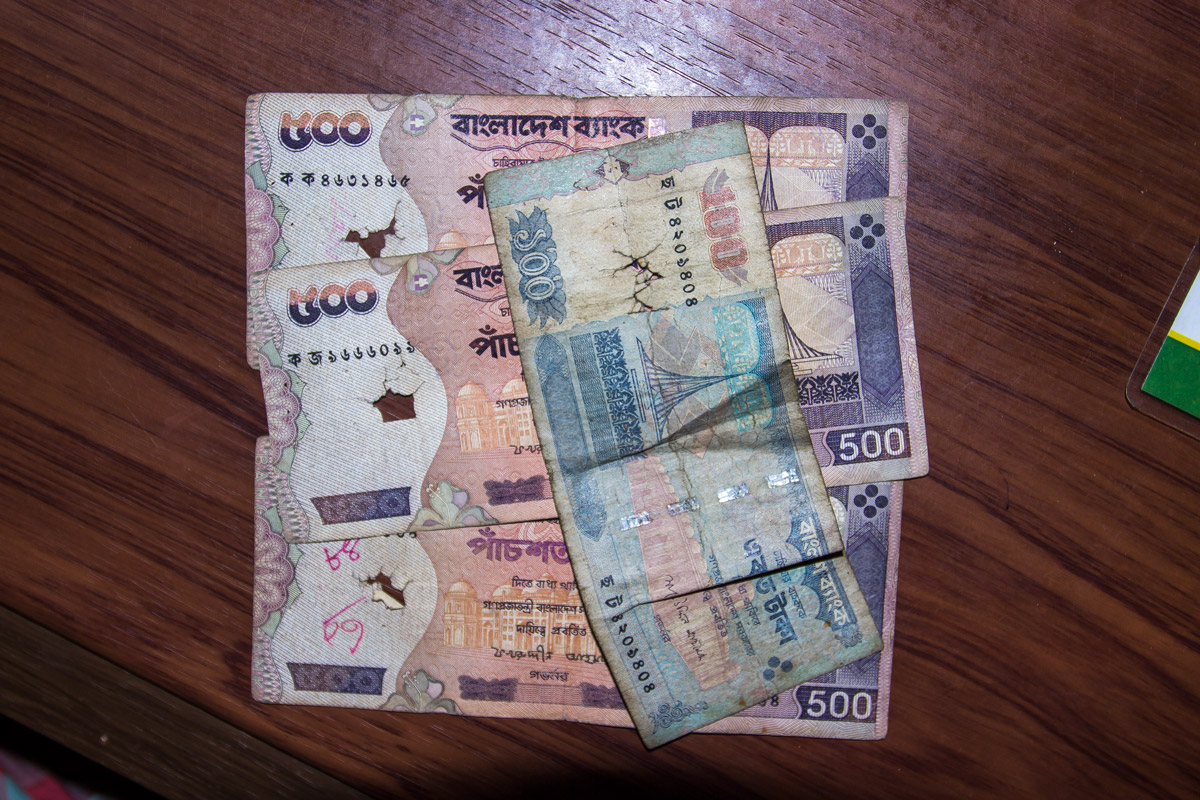
Bangladesh is dusty.

The country ranks second in the world in terms of air pollution.
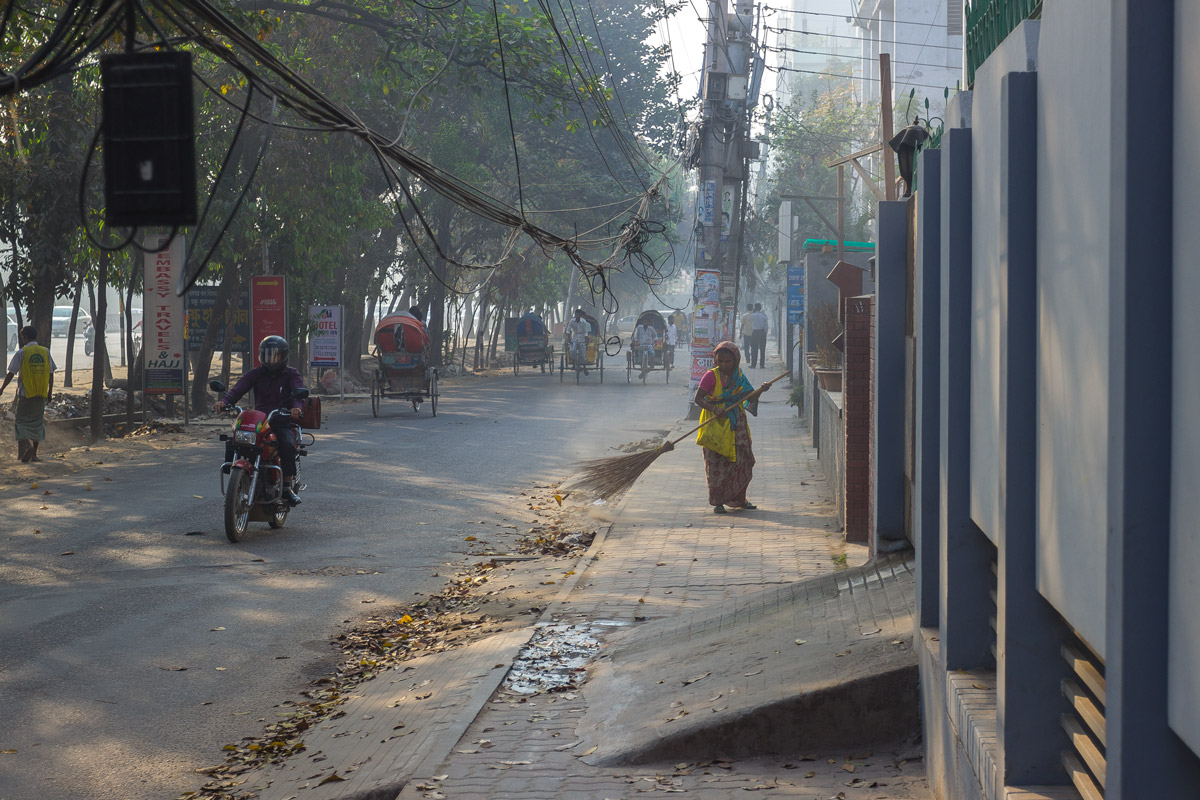
Since early morning, all traffic in Dhaka is paralyzed, and the horizon is not visible due to smog and dust.
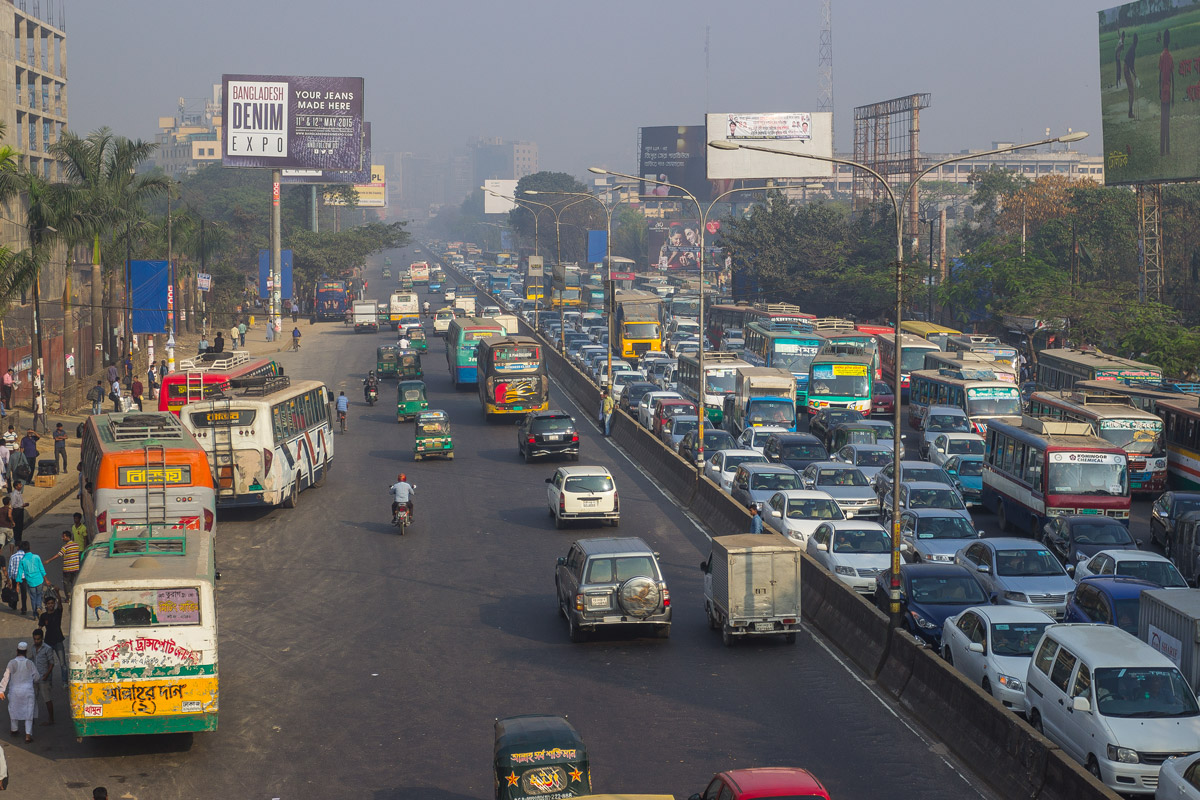
Railway station. All the rails are littered with garbage. People are waiting for the morning train to reach the city center. Some wait at the station, while others sit right on the tracks.
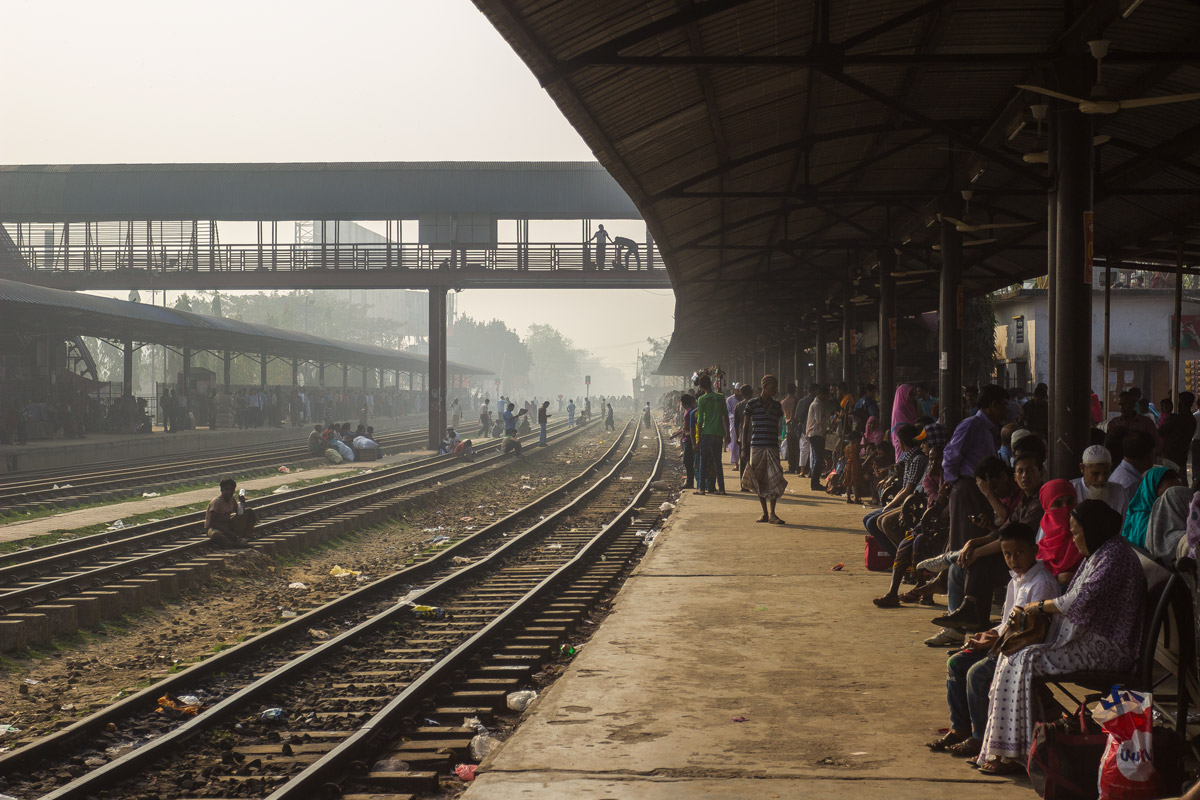
A train of uncertain destination approaches the adjacent platform, it’s either a long-distance train or a suburban train — hard to tell. But it doesn’t matter; the main thing is that the train is heading towards the city center. People jump from the platform, cross over to the other side of the tracks, and climb into the train from the opposite direction. I also jump, run, and climb aboard.
The compartment turns out to be a cabin. It has an extremely narrow corridor and windows with grilles — otherwise, the train is similar to an Indian one.

All the seats next to the windows in the compartment are taken. Meanwhile, perfect slum landscapes fly by outside the windows. So, I surrender to the beautiful Indian tradition: I step out into the vestibule, unlock the door latches of the train car, and hang out with my camera while it’s moving.
The train first passes through some jungles, then gradually enters the city, and individual plastic bottles evolve into huge piles of garbage and decay.
This is roughly how my train looks from the outside. There are many people in Bangladesh, and trains run infrequently, so they sit right on the roof, while body parts dangle out of the windows.
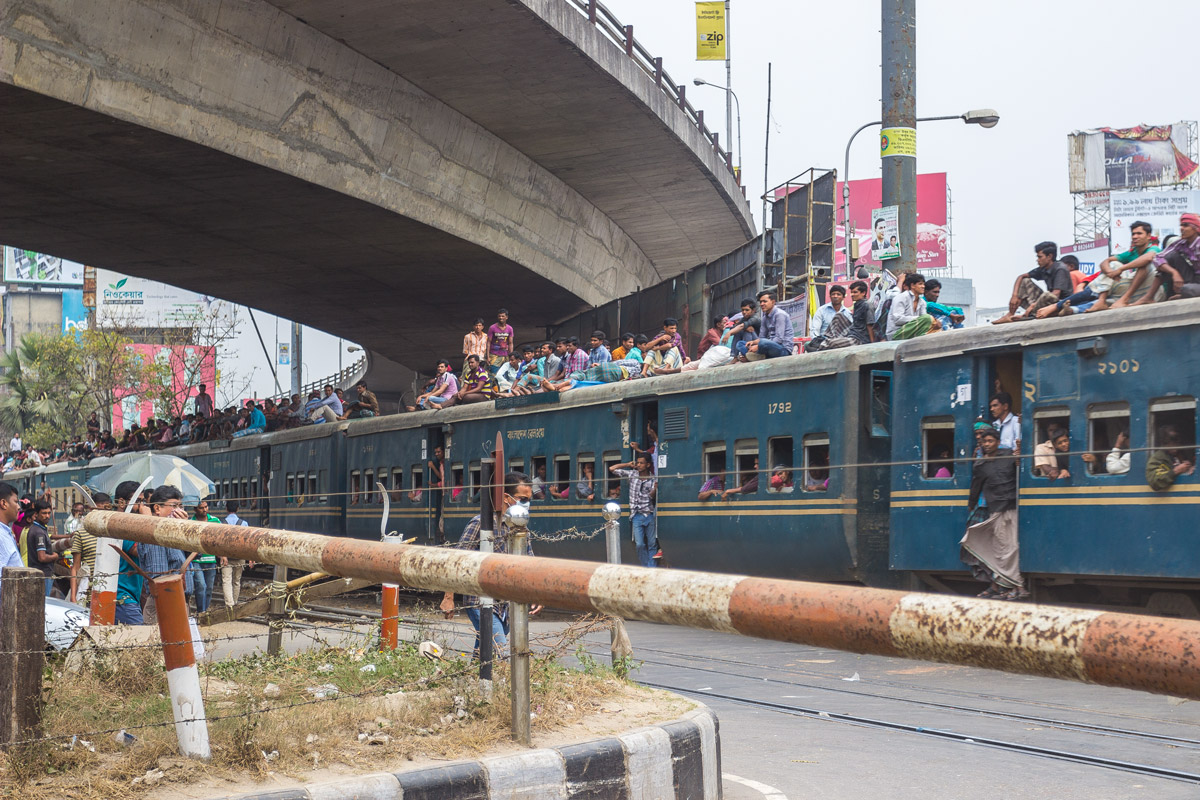
In neighboring India, whatever you say, the trains are excellent compared to Bangladesh.

Traffic jam in the city center.
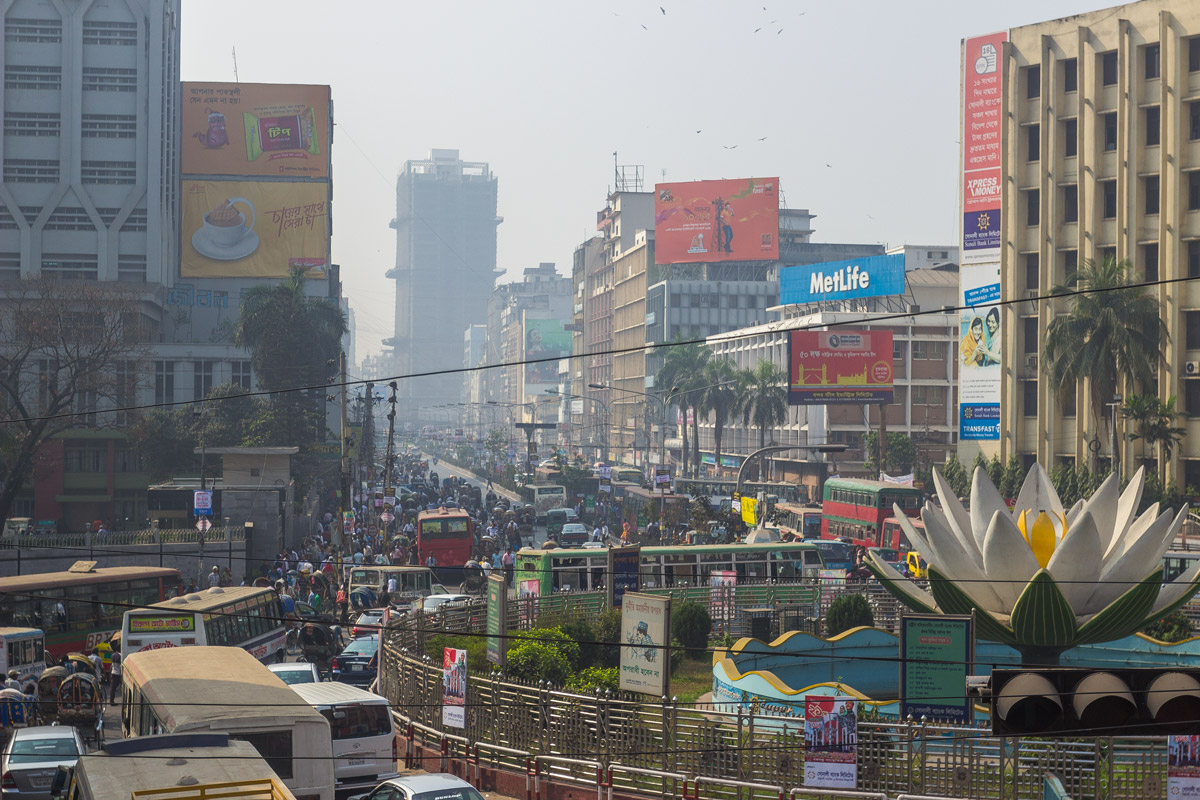
Dense.

Trading takes place on the sidewalks. All walls are covered with various propaganda posters and announcements.

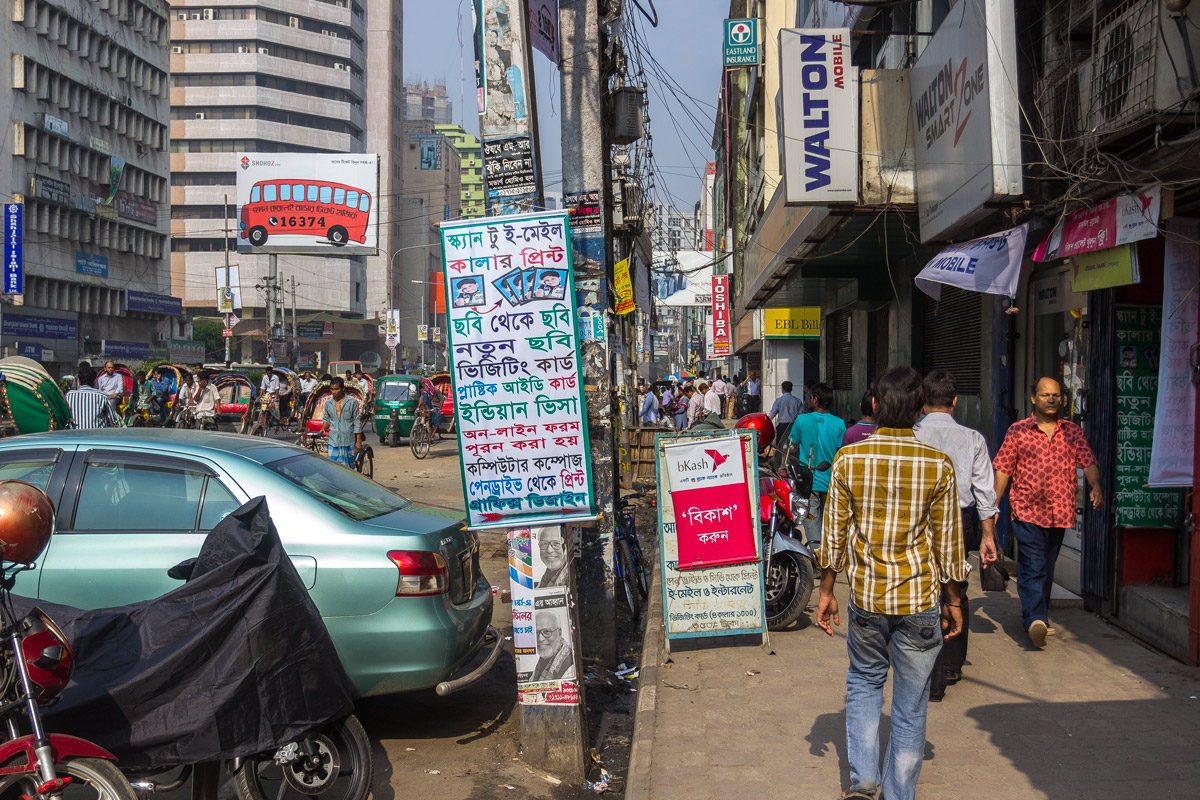
Dusty Indian metropolis.

Fronts of the houses. Is the word “facade” applicable here?


Office centers. A bunch of air conditioners on the windows. All buildings are dusty.

More modern business centers. Of course, even the most modern architecture in Dhaka is awful.

There is no city as such in Dhaka. There are only endless highways and cheap panel buildings.
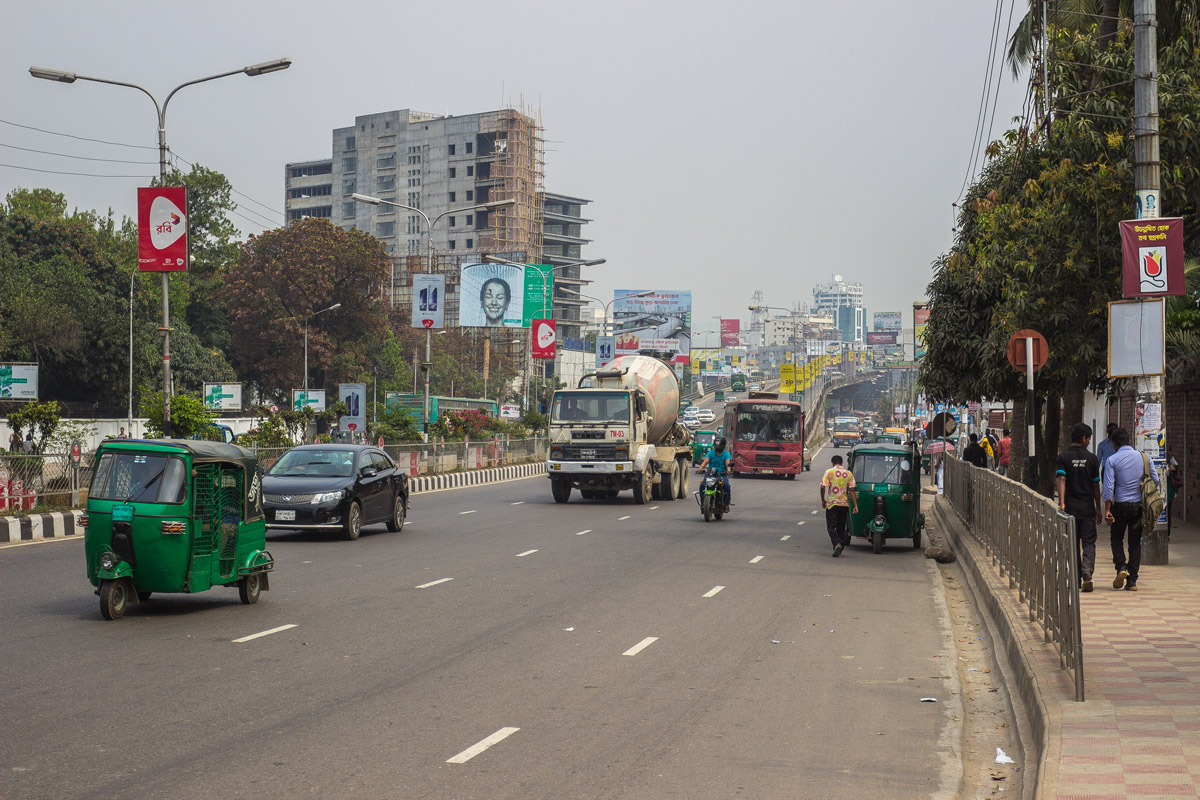
Highways, highways, highways. That’s how most of Dhaka looks like.
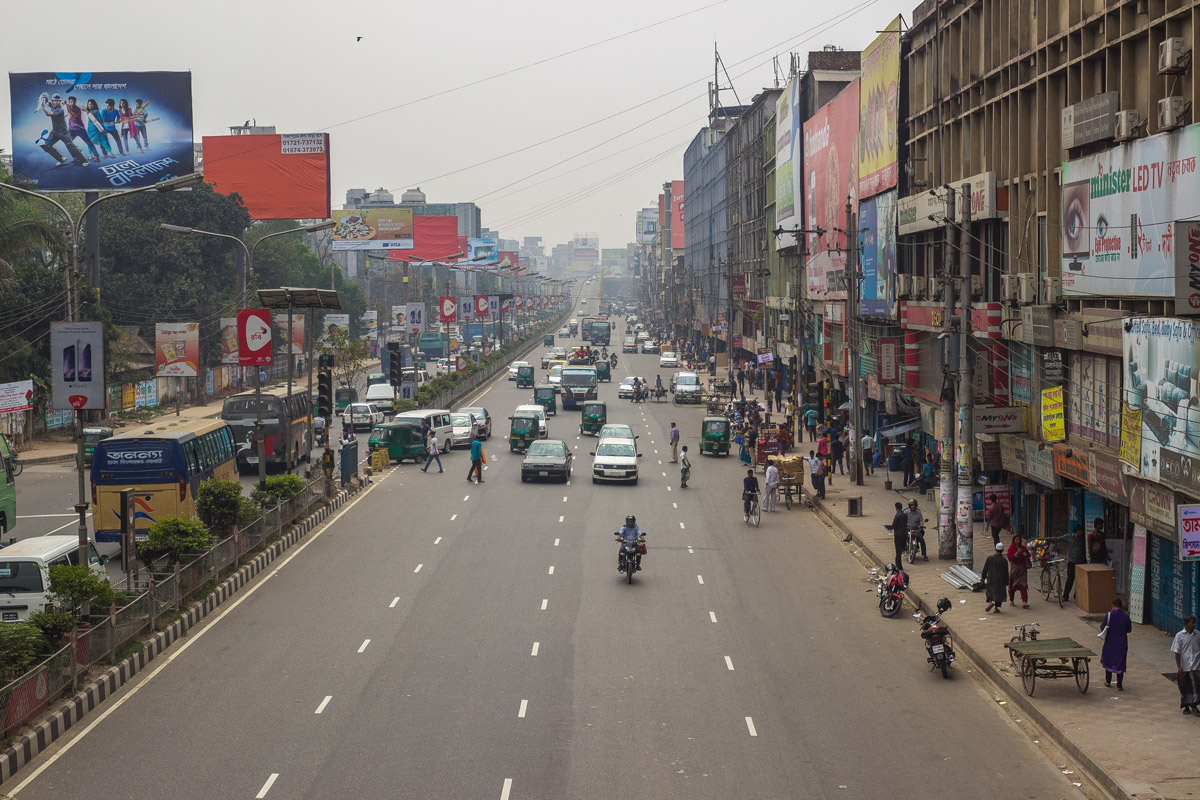
Overall, it resembles Delhi. You don’t feel the highest population density in the world. It’s the same hustle and bustle as in the rest of India.


Skyscrapers are even making their way into Bangladesh. On the roof of one of them, there is a super cool restaurant. It’s full of foreigners and wealthy Bangladeshi businessmen in ties, the air conditioner provides relief from the urban heat, and the dust hardly reaches such heights. A hearty lunch here will cost around a thousand rupees. However, the service is completely ordinary, without any frills. In Mumbai, they would wipe your mouth with a napkin for that kind of money. Nevertheless, the main attraction here is not the food but the city view.
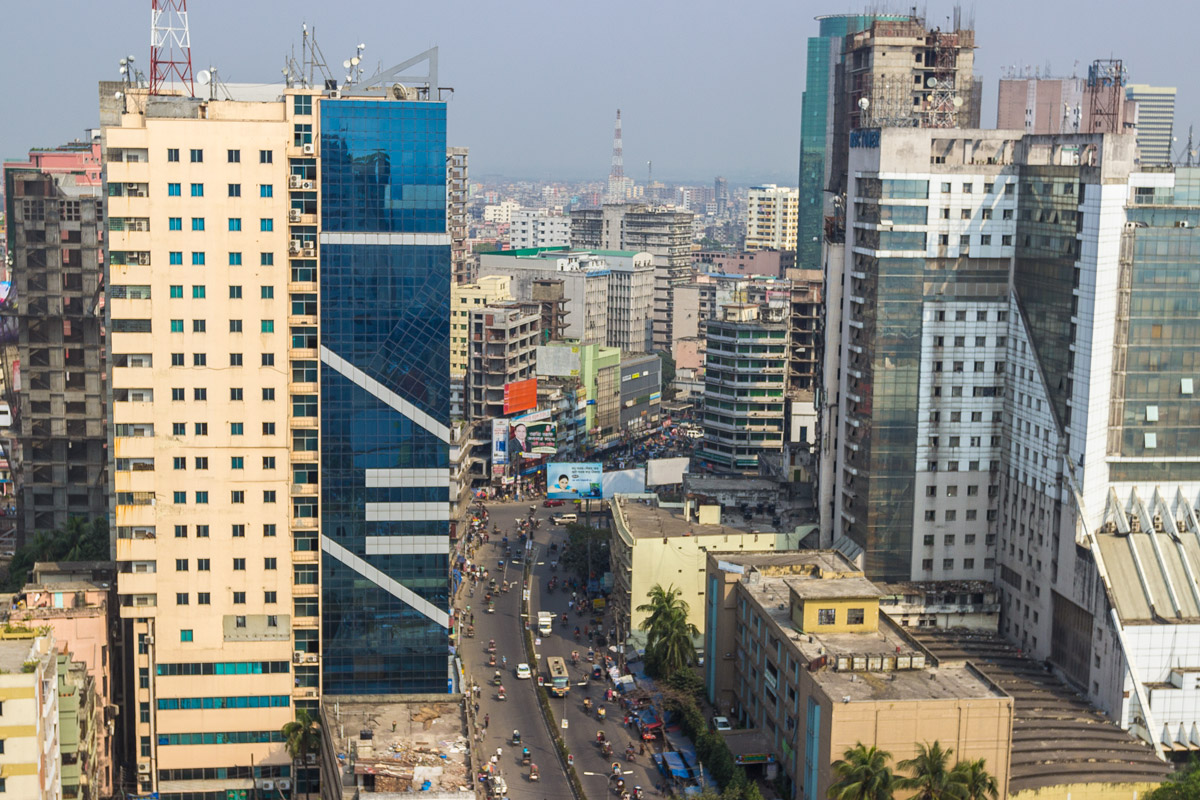
Here are the stone jungles growing in Dhaka. Cheap, dusty, with small windows.
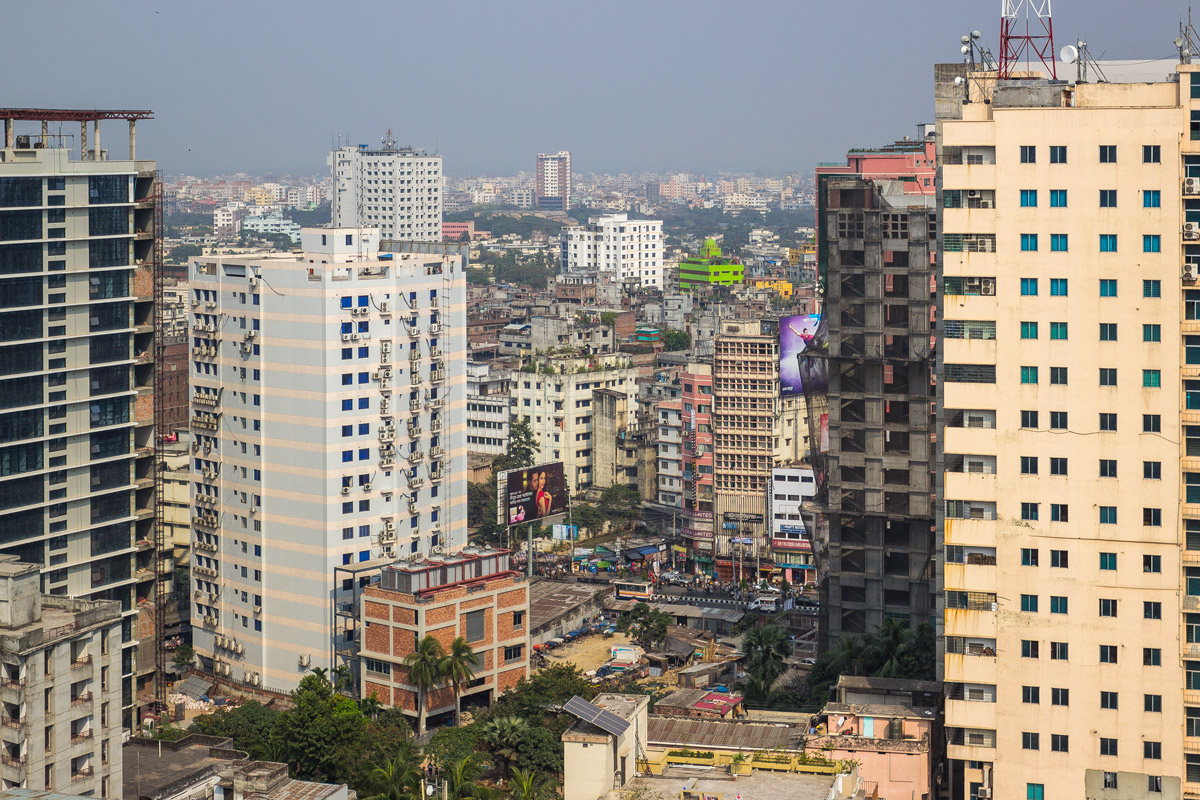

Here is perhaps one good building, there is even a green garden on the roof.
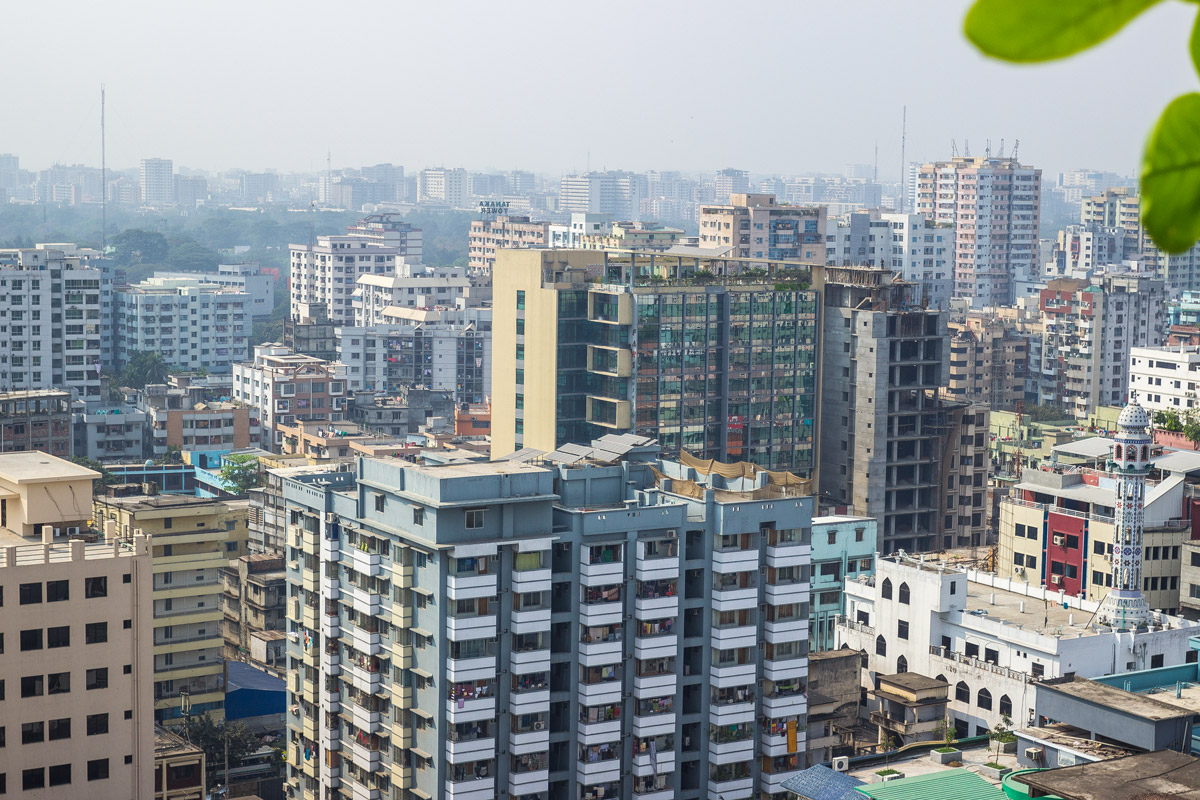
Two large stadiums right in the city center. In 2011, the World Cricket Championship took place here.
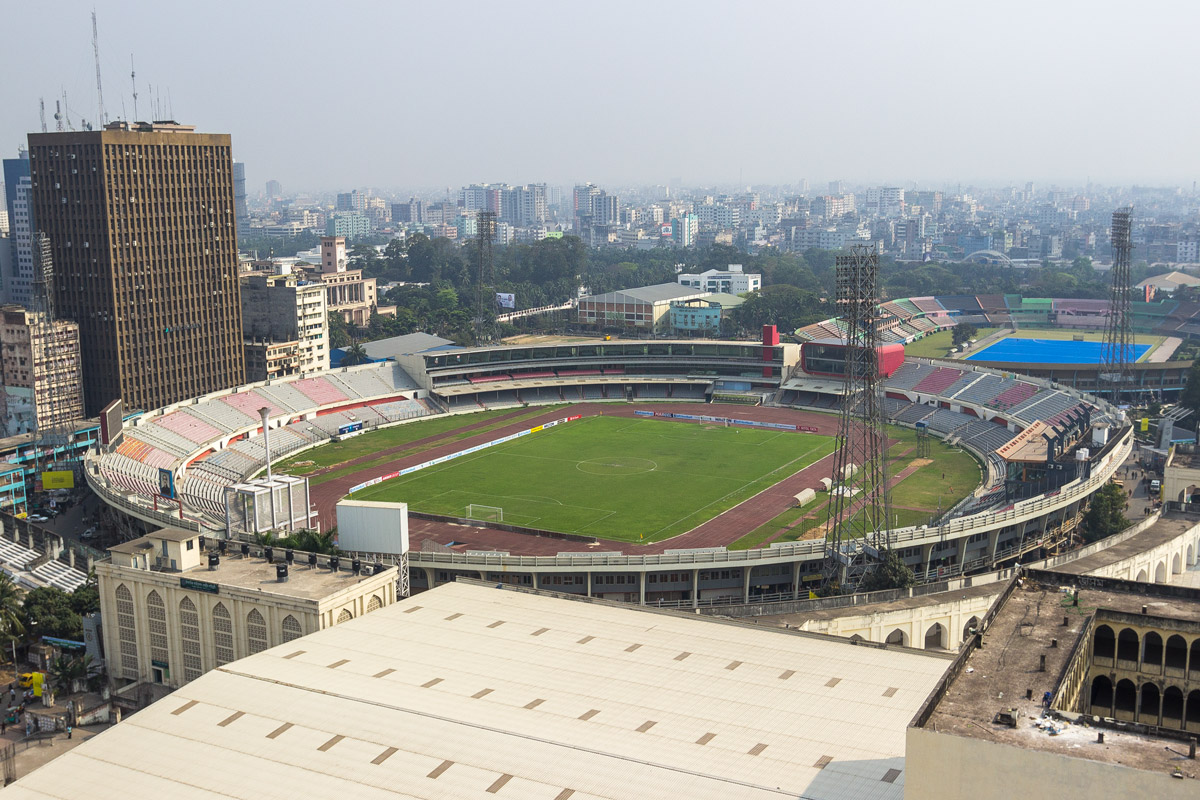
The situation on the roads. Somewhere it’s free-flowing.

Somewhere it’s jam-packed to the brim.

From above, the road chaos is clearly visible: there is no structure in the traffic flow. If you look at the traffic in any civilized country, it would be organized in lanes. In Indian countries, however, cars, rickshaws, and pedestrians mingle in a shared space and float in it like particles in a liquid. It’s some kind of Brownian traffic.

Here’s what’s surprising: the whole road is filled with buses, yet the streets are still dominated by cycle rickshaws! Where are they all going and who are they carrying?
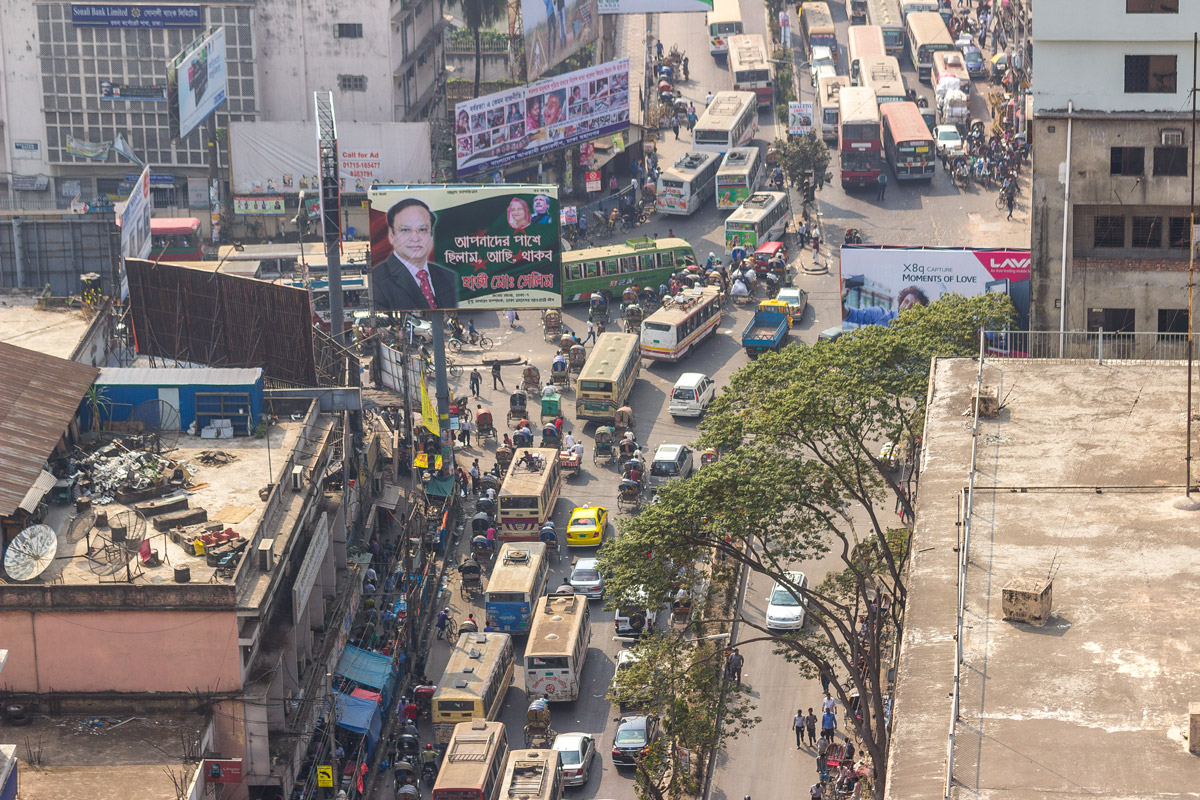

If you turn off the main streets, the scene doesn’t become any less disheartening. Dust, emptiness, and hopelessness.

Sometimes you come across charming alleys.

Seems like upscale housing.

The houses on the shore of a small urban lake must be the most expensive ones. Surprisingly, there isn’t even much garbage: the landfill is carefully fenced off from the water with a woven fence.
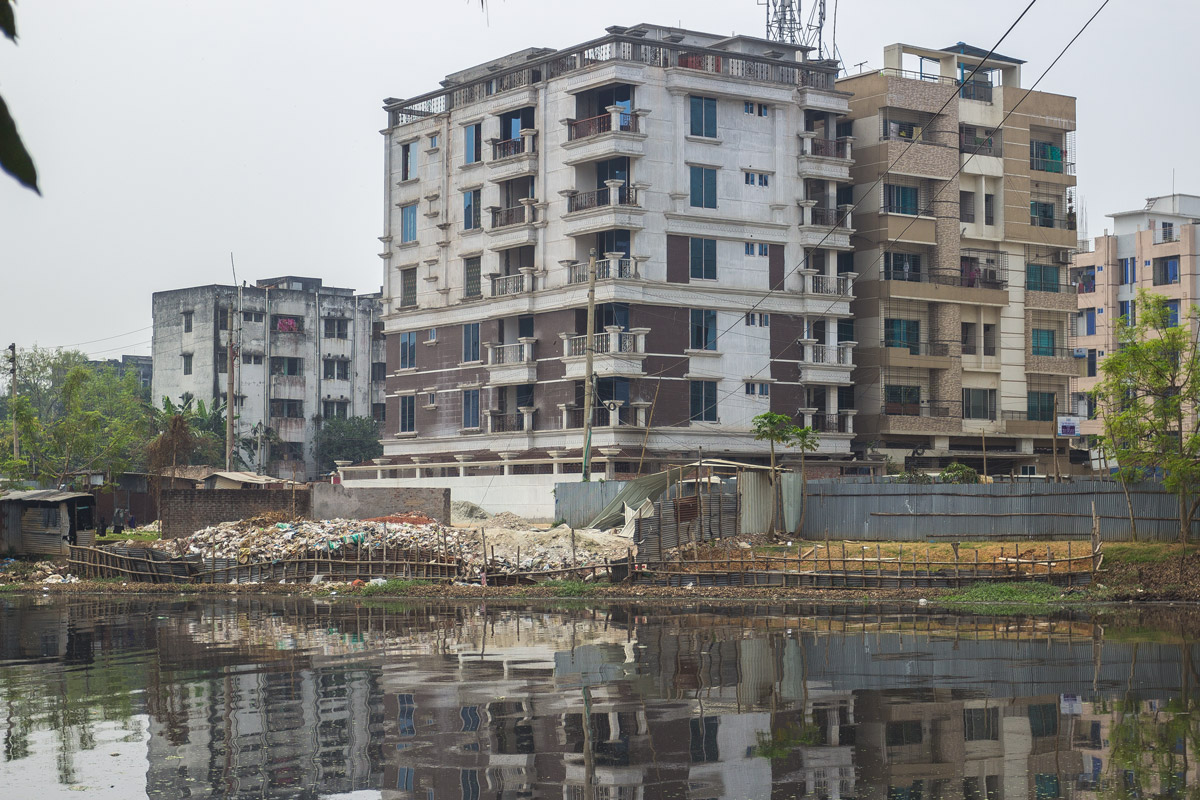
Here is something truly modern even. It must be nice to live in such a house.
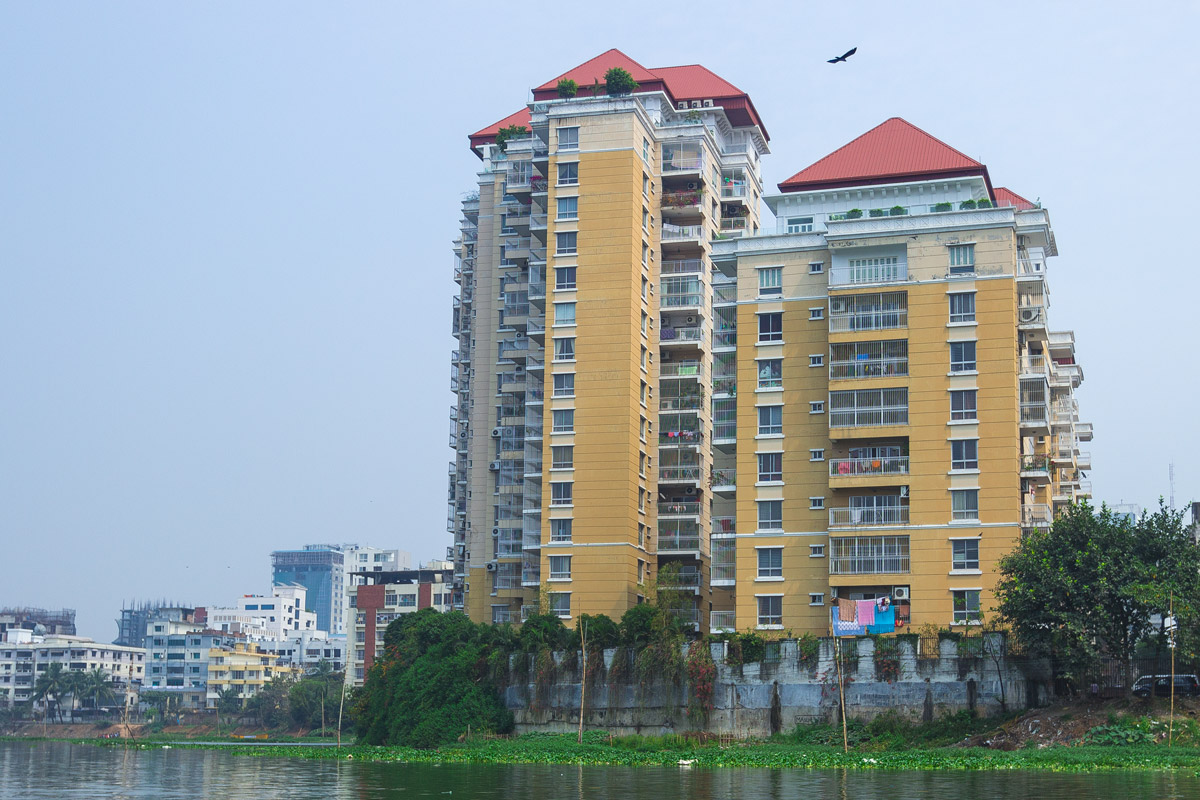
One of the few attractions of Dhaka is the pink palace called Ahsan Manzil.

At first glance, it looks impressive and beautiful. However, the palace grounds are the only clean spot on the city map. Here’s a view of what it looks like from the side. The palace is on the left.
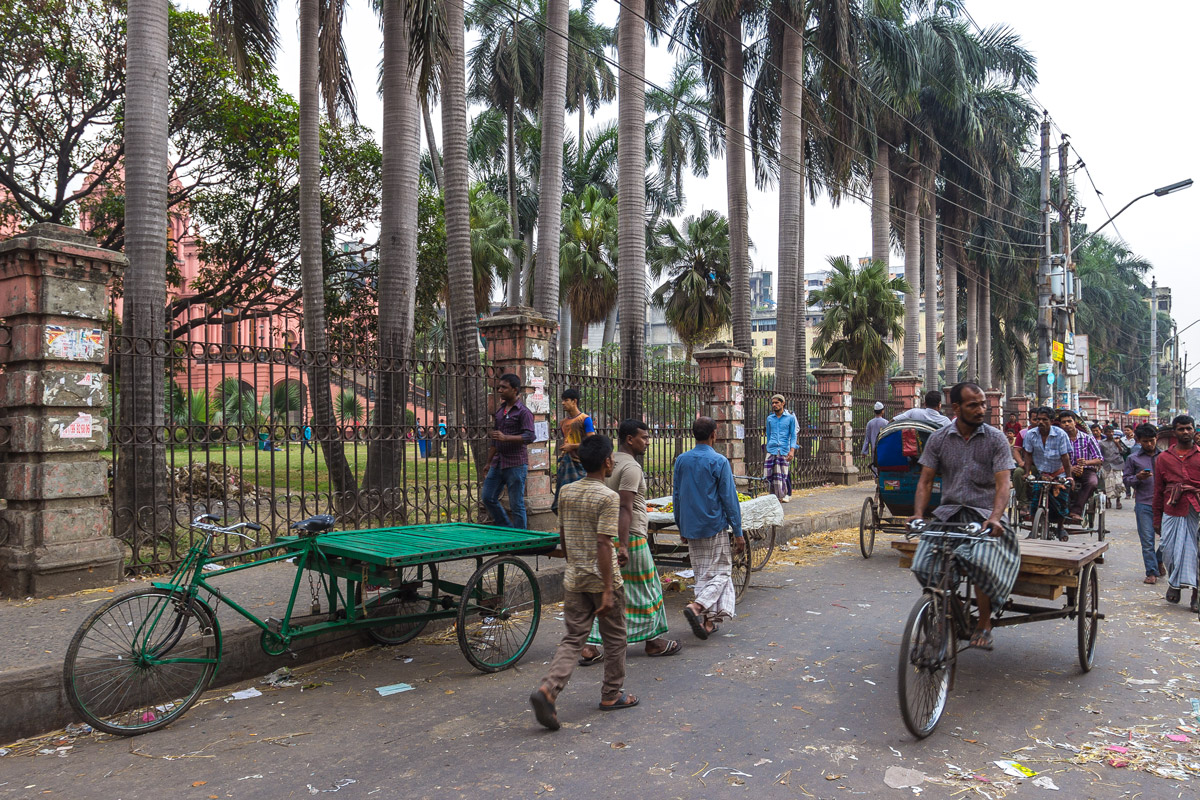
And on the right is a long street cluttered with commerce, trucks, and idle riffraff.

Just a little aside from the palace, and that’s it, a mess of dirt.

Across the river flows a river. Workers are bustling in the port.
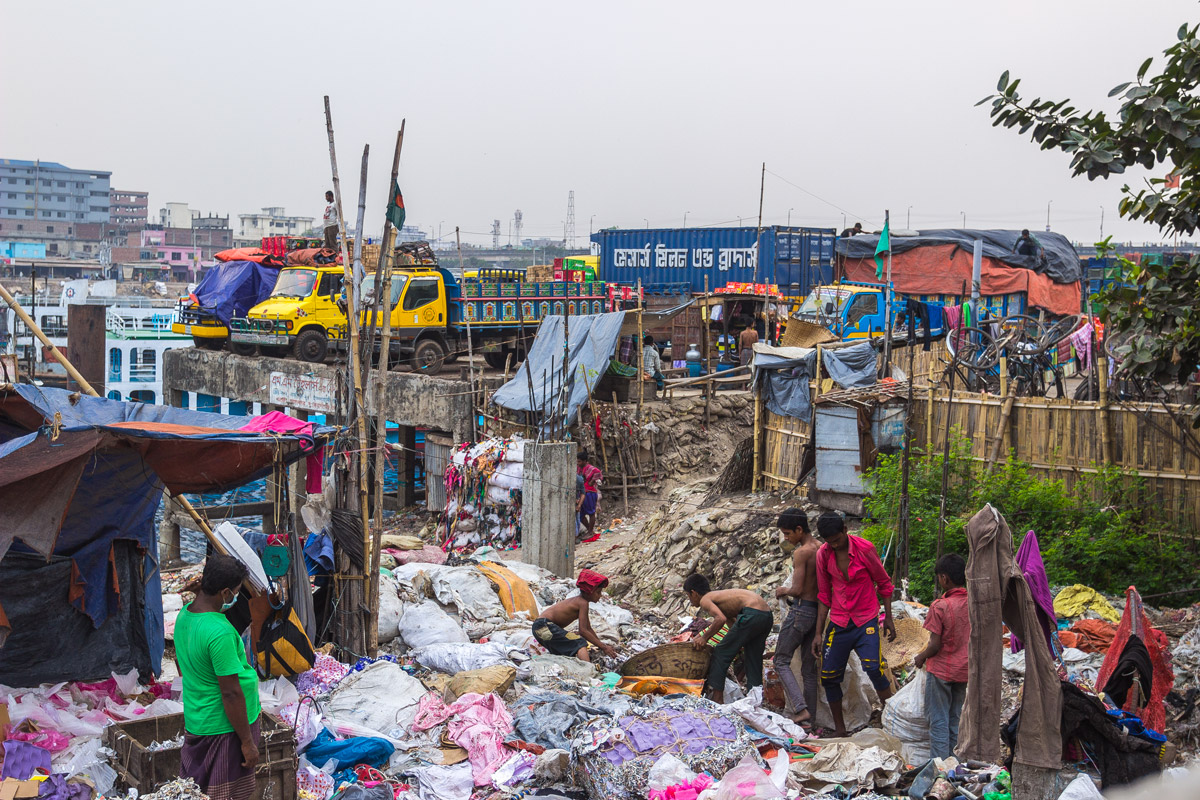
They are sitting, resting.

Bringing something.

Working.

The streets adjacent to the port are the dirtiest.

Cycle rickshaws.

Bicycle rickshaws.

Double-decker bus. It resembles the ones in Bombay, but in Dhaka, all of them are extremely old and broken.
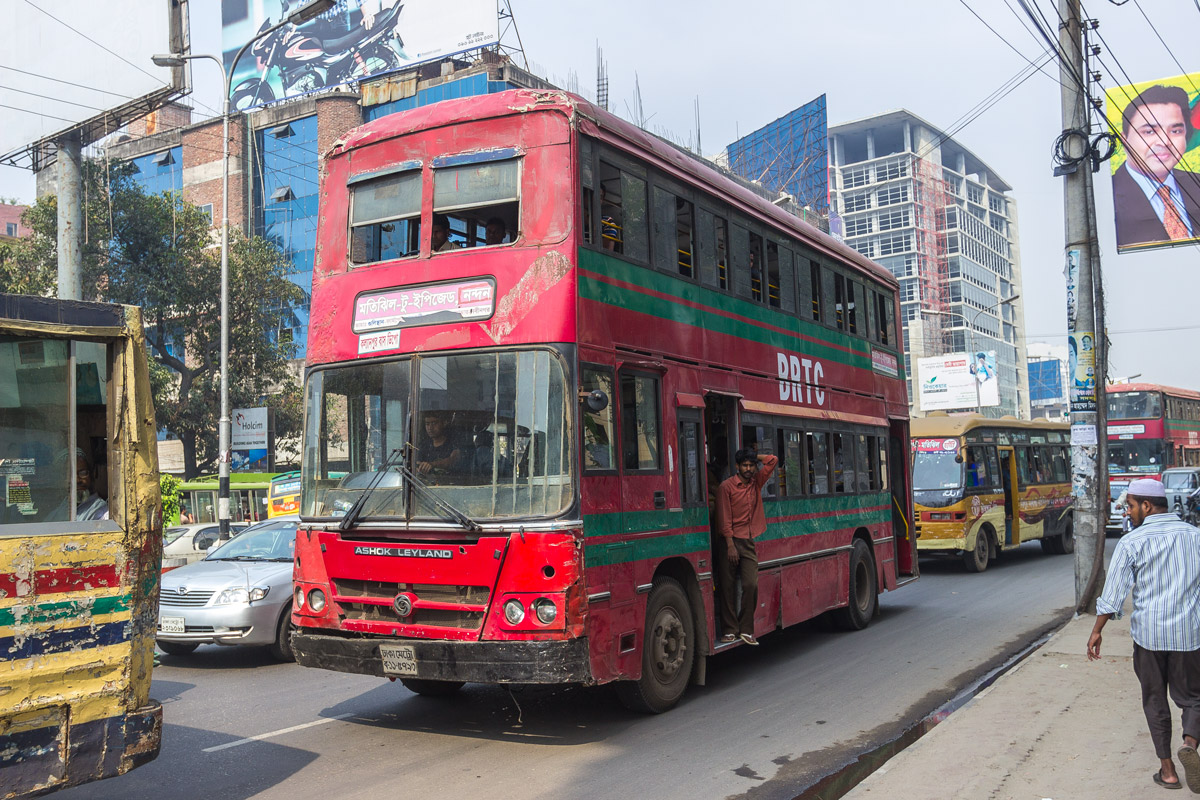

Mini-bus.

Neat rows of auto-rickshaws. In Bangladesh, all auto-rickshaws are enclosed in an iron cage. It seems to be for safety reasons, as there are frequent cases of bags being snatched while on the move.

Riding in such a cage is not enjoyable. The seats are hard, and the road shakes you in different directions. There is very little space, making you feel like you’re in a prison.

Auto-rickshaws are the main cause of traffic jams in all Indian countries. They are abundant in almost any city.

School rickshaws.

Students climb into this cage, and the poor man transports them all to school.

At some dangerous intersections, in addition to traffic lights, the road is also restricted with a barrier.

The divider of the oncoming lane: concrete blocks with bamboo sticks tied to them.
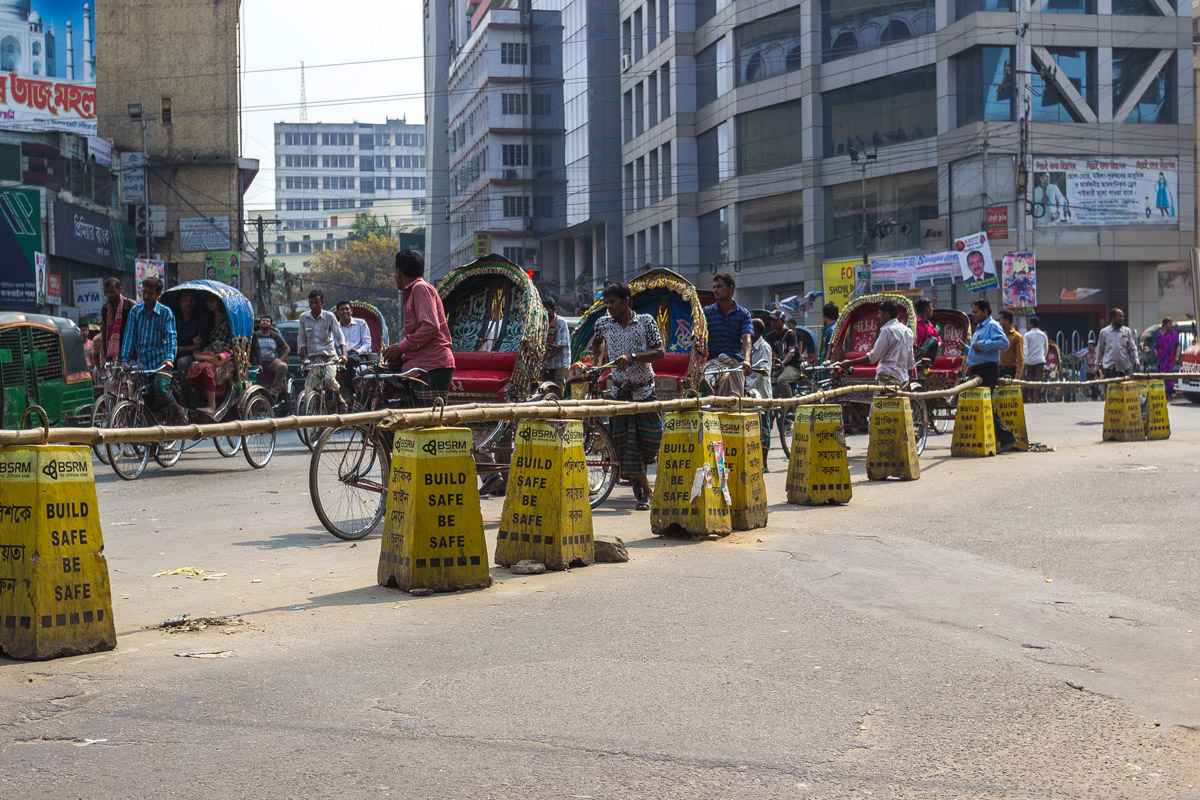
Monstrous pedestrian bridge.

On the streets, you often come across walls with fresh newspapers, just like in the Soviet Union. Residents approach and read them.


Mailboxes.


Loudspeakers. There are many of them on the streets of Dhaka, and they are used for various purposes, from reciting prayers to rallying at protests.

Posters of the Communist Party. Just like in Kolkata, communist ideas are popular here.

And here is an incredible amount of campaign posters. Who are all these people? The country’s elections took place a year ago...

And how are things with civilization here? For example, here is a poster. Internet cost: 1000 taka (10 dollars) for 5 megabits per second. Access to social networks in Bangladesh is not restricted despite political instability and cases of attacks on local bloggers criticizing Islam. However, pornographic websites are blocked in the country.

It’s not surprising to see an abundance of advertisements for education and courses in Dhaka. Despite the wide range, the quality of these courses is extremely low, and the state of education is very poor: only 58% of Bangladesh’s population can read and write.
Computer training courses: Office, Internet and Email, Photoshop.

Course advertisements: HSC courses (10th-11th grade), medical education.

Higher education advertisements: BCS (Bachelor of Computer Science), MBBS (Medical College).

Television and refrigerator advertisement. The manufacturer is a local company called Minister. Information about the product could not be found, most likely they are ordering from the Chinese and changing the label.

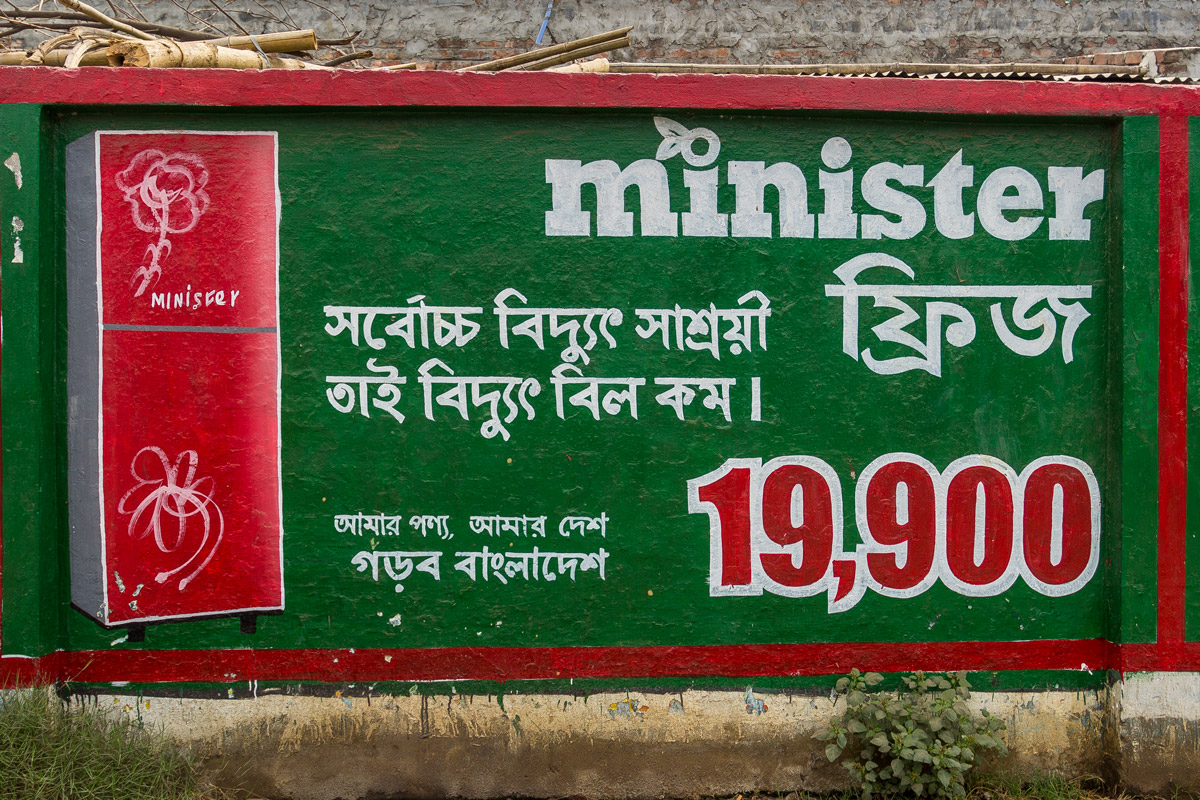
Café and confectionery advertisement. More often, the advertisements are painted on fences, just like in India. It turns out to be quite colorful.

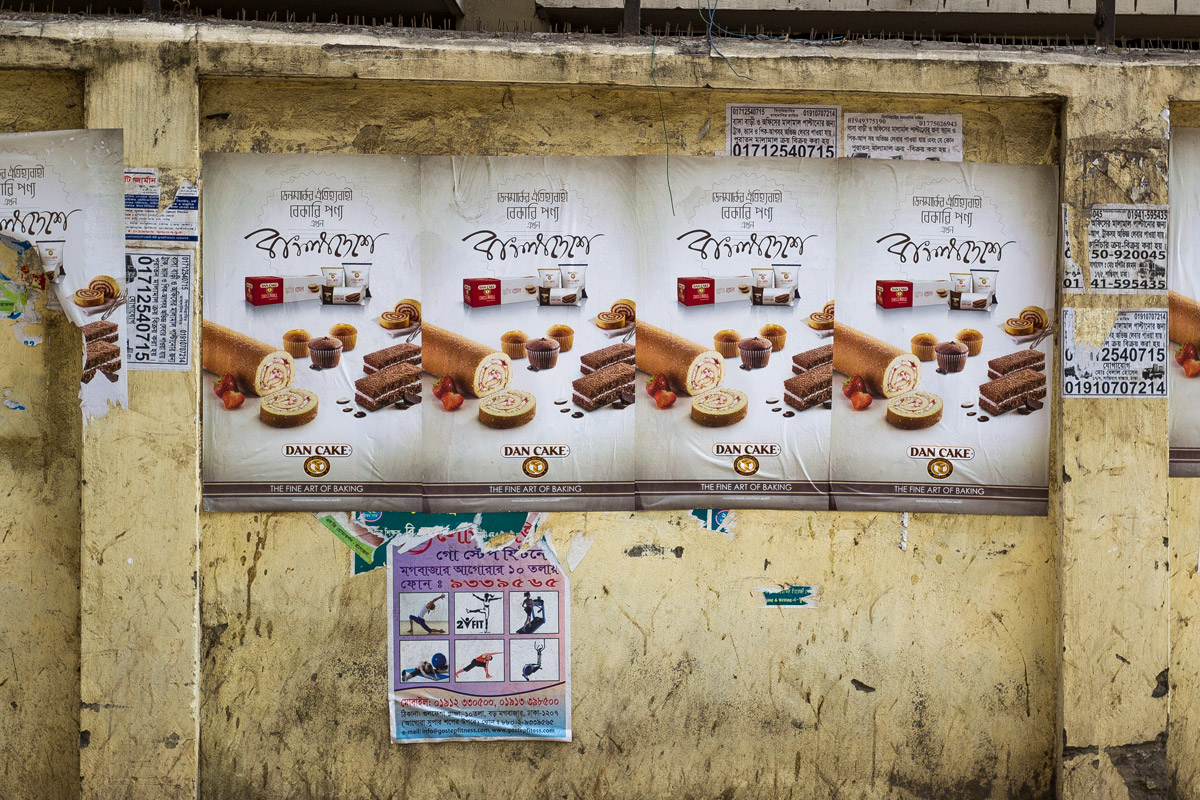
Advertisement for a mobile food ordering application. Food delivery by a large Asian company, Foodpanda, operates in the three largest cities of Bangladesh. In addition to Bangladesh, the network also exists in dozens of other countries.
If there are such applications, it means that someone is using them. Therefore, they must have at least some smartphone and the ability to pay for home delivery. On the other hand, the advertisements are not even translated into Bengali, everything is in English. The target audience is clear.

Meanwhile, the sun slowly rolls behind the horizon in Dhaka. The Bangladeshi Times Square plunges into the night, but not a single advertisement lights up with neon.

The morning traffic jam in the city center gradually transitions into the evening one.

Tomorrow a new day will begin, just as loud, chaotic, and dusty.


